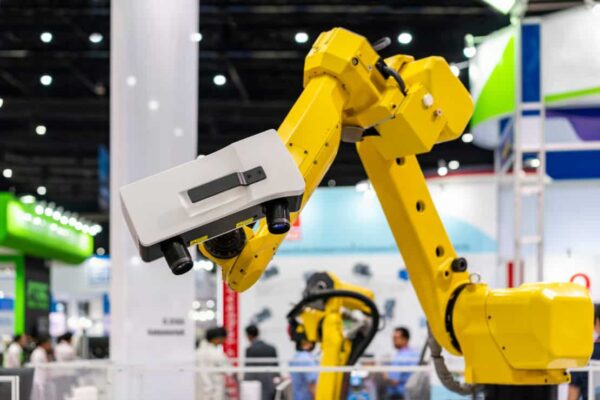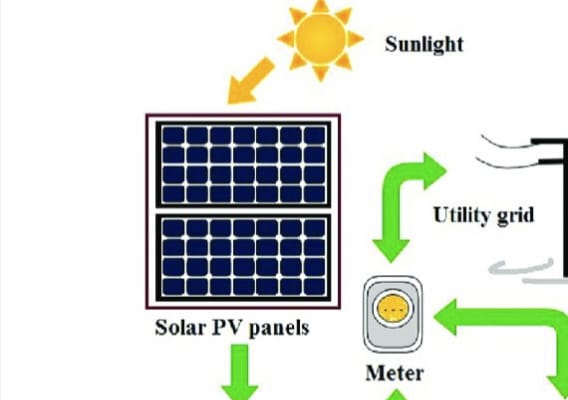What are the main components of a Robot and know more?
A robot is a machine made by intelligent people to perform different specific tasks. It is a preprogrammed machine consisting of hardware and software. Each robot has different types of autonomy.
What is a Robot?
A robot is a preprogrammed machine made by intelligent people to utilize its service for different benefits. Everyone has a shape, size, and design according to their needs and utilisations.
The robots when empowered with artificial intelligence and machine learning algorithm, acquire analytical skills and solve many issues automatically. They enhance the present capabilities of humans in many sectors and save valuable time and energy.
Basically, they do the stereotypical routine work for mankind. It is a big contribution of modern science that they are engaged to perform many hazardous tasks including nuclear industries, space, defense, underwater repair of submarines, etc which are not suitable for humans. Except for a few specified robots, most of them are remotely controlled by intelligent people.
The etymology of “Robot” says its functions clearly. Robot word derives from the Czech word “robota” which means forced labor. The word finds its place in the historic play “Rossum’s Universal Robots” in 1920, where the play’s characters were referred to as robots because in spite of being mass-produced workers they were not capable of any creative thinking. Now the present robots are in the same boat with few exceptions.

Components of Robots:
A Robot has a physical structure, a mechanical one known as a kinematic chain, which resembles and functions like a skeleton of a vertebrate. The chain consists of links,/rigid bodies, actuators, and joints. The links of the chain are like bones and actuators are the muscles of the machine. At the end of the joint is mounted with an end effector. They are used as manipulators for which end effectors are the essential components that can be anything. It may be a welding device to a mechanical hand. For the kinematic chain, the sensor, motor, battery, CPU, and microcontrollers are added to make the device live.
Actuator:
An actuator is a device, that acts as the muscles of a robot, converting potential energy and input signals to motion. The motion may be linear or rotary. The linear actuator produces linear motion, whereas the rotary actuator produces circular motion. In linear motion forward and backward movement is made in specific areas. But in the case of the circular actuator, the area of movement is not specific. The most popular actuators are motors. Actuators may be electric, magnetic, pneumatic, rotary, or hydraulic. However the most popular is an electric motor.

Motors:
Motors are a vital physical part of a robot, responsible for its movement. The attachment of the motor to the specific parts of it depends on the utilisations and tasks of the machine. Accordingly, it may be fitted to wheels, limbs, or the control surfaces of the robots. Electric DC motors and stepper motors function under the direct control of operators.
A Stepper motor is used in the machine, where only a certain degree of movement is required, whereas a DC motor gives a high starting torque for driving heavy loads over a given speed. The motor in the robots converts the electrical energy into mechanical energy, enabling the machine to work. Alternative to DC motor is piezo motor or ultrasonic motor.
Power:
Robots need the power to make the motor run, the sensors, and the software to become operational. There are three basic types of power supplies are preferred, such as electrical, hydraulic, and pneumatic. Electrical power is the most preferred source in industrial robots. Pneumatic power(pressurized air/gas) is extensively used on FRC robots. Hydraulic power is used to drive motors and cylinders for heavy-duty purposes.
Battery:
The main source of electric power for the machine is batteries, which are rechargeable. Lithium batteries such as lithium-ion (Li-ion) and lithium iron phosphate (LiFeP04) are mostly used in robotics.
End effectors:
The arms of the robots are called end effectors, used to manipulate objects, such as picking up, pulling, pushing, or displacing, fittings and assembling, etc. Most arms are replaceable effectors, allowing them to perform specific tasks. However, some have fixed, end effectors.

CPU:
The processor is considered, the brain of the robot. Identification of the proper and right processor for a specific purpose is definitely a hard task. The capabilities and capacities of a robot depend on the CPU to a great extent.

Microcontroller:
The computer programs are written in a microcontroller. The most popular language that the machines can understand is probably C/C++. C++ is an objective-oriented language. Python language is used in machine learning, natural language processing, neural network, and artificial intelligence in robotics
In fact, a microcontroller.t is a microcomputer integrated into a single chip, containing a microprocessor,(C.P.U), RAM, ROM, etc. The microcontroller does all the pre-program activities once the controller button turns ON. Every microcontroller has some specifications like the size of the data bus,(8bit,16bit,32bit, 64bit, etc.), maximum clock frequency( 8MHz-700MHz), program memory size/ flash memory(4k bytes to 2M bytes), size of RAM(1k to 1M bytes,)number of I/O pins( for configuration for different purposes), operating voltage, interface types, etc. AUR series microcontrollers of Atmel and PIC series microcontrollers are preferably used to empower robotic applications.
Sensors:
Sensors are the sense organs of robots. Sensors are necessary to make them automated. But of the sensors, robots are handicapped or unfit to perform any tasks. Sensors are connected to the brains and actuators of the machine. Sensors provide input to the system, where the machine gives the output using actuators following inputs. The brain of the robot, the processor is responsible to read the data from sensors, decipher them and conclude with decision-making instantly. The decisions of the brain are executed by manipulators, the actuators.
Bottom line:
Robots are part and parcel of modern days life. They complement humans in many fields. Being programmable machines, they possess physical bodies and software acts as the brain to implement designated tasks as per input given by sensors. The actuators, the muscles of the machine, power, batteries, end effectors, CPU, microcontrollers, and sensors are important components of the robots that make the machines some form of autonomy. Invisible Internet robots /bots work on computerized commands.





2 Comments
Technology has helped mankind is various ways Robot is such example…..made by mankind for the ease of mankind…..such a revolutionary invention that might be before a century no one would have dreamt of…..such inventions are blessing it’s users in a varied different ways to make our life easier ✨💫💫✨……..
Very nice article……✨✨✨✨
Interesting topic.